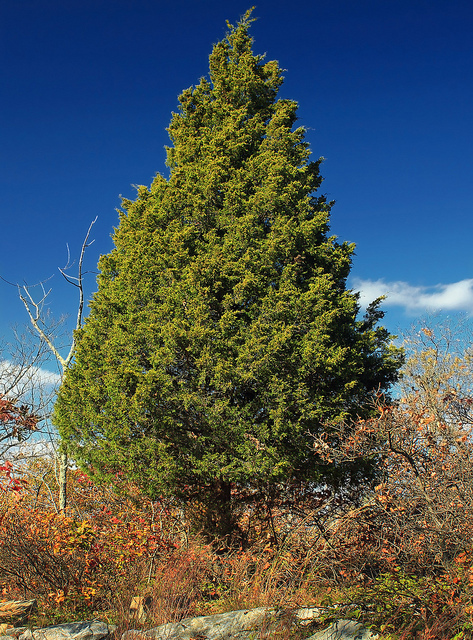Eastern Red Cedar : Overview

Eastern red-cedar (Juniperus virginiana) along the Appalachian Trail east of Totts Gap, Northampton County, within the Delaware Water Gap National Recreation Area (Tonelli, 2013).
By Mariah Noth
Juniperus virginiana is commonly known as Eastern red cedar, but also referred to as Eastern juniper, pencil cedar, and aromatic cedar. A member of the cypress family, its name is derived from the vibrant crimson hue of its heartwood. Its Lakota name, “chansha,” directly translates to “red wood.”
Although the common name "cedar" was applied by early settlers to North America, it is actually a juniper as indicated by its scientific name. True cedars belong to the genus Cedrus which are native to the Middle East and are distinct from red cedars and various other American trees with the common name "cedar." The Eastern red cedar is also not to be confused with its much larger relative, the Western red cedar (Thuja plicata), which is extremely significant to indigenous people of the Pacific Northwest region of the United States.
The wood of the Eastern red cedar is highly valued for its beauty, durability, and workability. It also provides cedar wood essential oil for fragrance compounds, food and shelter for wildlife, protective vegetation for fragile soils, and has many native uses. Exciting scientific research has also recently linked the Eastern red cedar to modern medicinal developments including cancer treatment.
